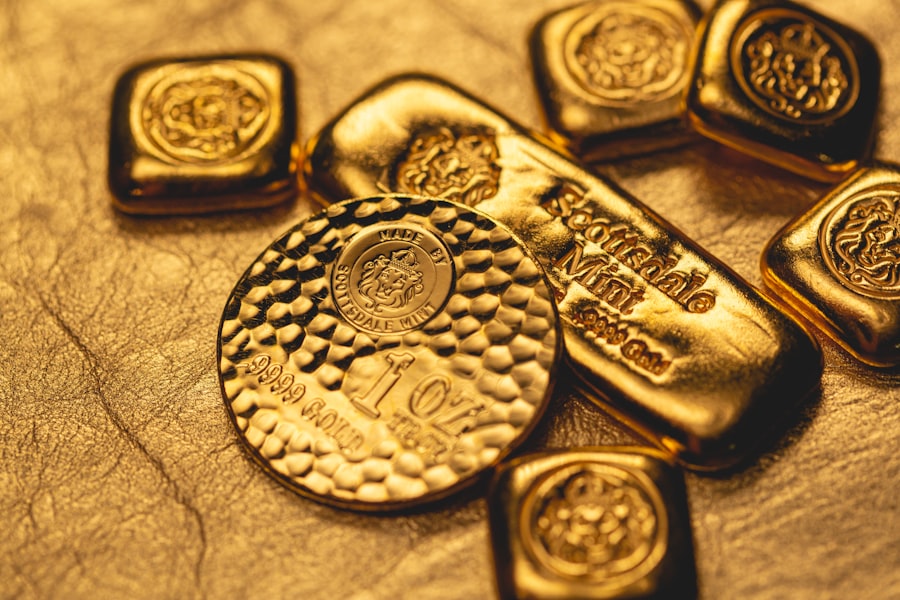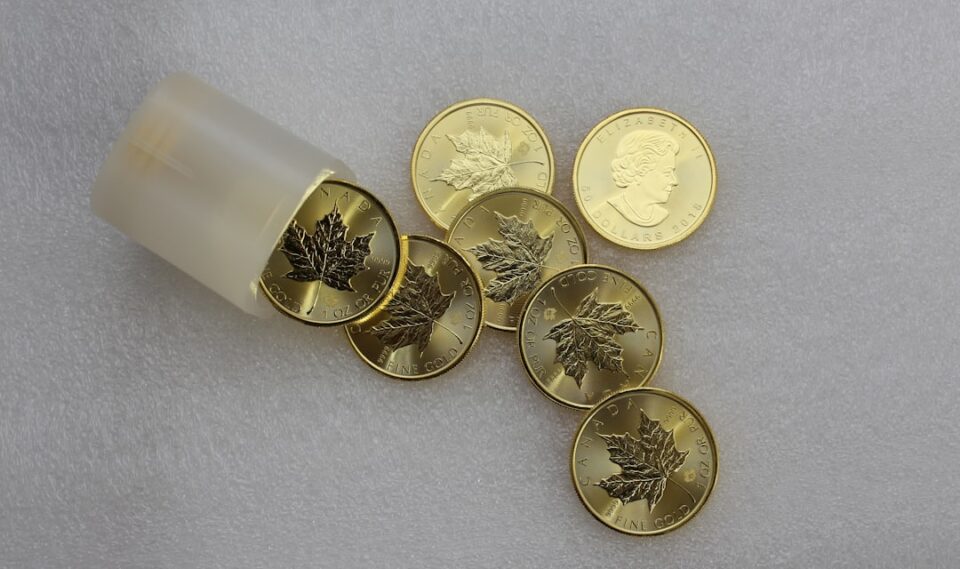Gold has long been revered as a store of value and a safe haven asset, particularly during times of economic uncertainty. Its intrinsic value, derived from its rarity and the labor-intensive process required to extract it, makes it a unique asset class that often behaves differently from traditional currencies and financial instruments. As global economies face increasing volatility, investors are increasingly turning to gold as a hedge against currency fluctuations.
This strategy is rooted in the belief that gold can preserve wealth when fiat currencies lose purchasing power due to inflation, geopolitical tensions, or economic downturns. The allure of gold as a protective measure against currency devaluation is not merely a modern phenomenon; it has been a cornerstone of financial strategy for centuries. In an era where central banks can print money at will, leading to potential inflationary pressures, gold stands out as a tangible asset that cannot be manufactured at the same pace.
This characteristic positions gold as a reliable alternative for investors seeking stability in their portfolios amidst the unpredictable nature of currency markets.
Key Takeaways
- Gold is often used as a hedge against currency fluctuations due to its intrinsic value and historical stability.
- Currency fluctuations can have a significant impact on investment returns, making it important to understand their causes and effects.
- Throughout history, gold has shown a strong inverse relationship with currency fluctuations, making it a popular choice for hedging.
- Investors can use various methods such as physical gold, gold ETFs, or gold futures to hedge against currency fluctuations.
- While gold can be an effective hedge, it also comes with risks such as price volatility and storage costs that should be carefully considered.
Understanding Currency Fluctuations and Their Impact on Investments
Currency fluctuations refer to the changes in the value of one currency relative to another, influenced by various factors such as interest rates, economic indicators, political stability, and market sentiment. These fluctuations can have profound implications for investors, particularly those engaged in international trade or holding assets denominated in foreign currencies. For instance, a strengthening domestic currency can erode the value of foreign investments when converted back to the home currency, while a weakening currency can enhance returns on foreign assets.
The impact of currency fluctuations extends beyond mere exchange rates; they can also affect inflation rates and purchasing power. When a currency depreciates, imported goods become more expensive, leading to higher inflation. This scenario can diminish consumer spending power and create uncertainty in the markets.
Investors must navigate these complexities, as currency volatility can significantly influence investment returns across various asset classes, including stocks, bonds, and real estate.
The Historical Relationship Between Gold and Currency Fluctuations

Historically, gold has demonstrated a strong inverse relationship with fiat currencies, particularly during periods of economic distress or inflation. For example, during the 1970s, the United States experienced stagflation characterized by high inflation and stagnant economic growth. As the value of the U.S.
dollar plummeted, gold prices surged, reflecting its status as a safe haven. This trend was evident again during the 2008 financial crisis when investors flocked to gold as a protective measure against the collapsing financial system and declining asset values. Moreover, the relationship between gold and currency fluctuations is not limited to the U.S.
dollar. In countries facing hyperinflation or severe economic instability, such as Venezuela or Zimbabwe, gold has often served as a reliable means of preserving wealth. In these scenarios, citizens have turned to gold as an alternative currency when their national currencies became virtually worthless.
This historical context underscores gold’s enduring appeal as a hedge against currency risk across different economic environments.
How to Use Gold as a Hedge Against Currency Fluctuations
| Metrics | Data |
|---|---|
| Gold Price | Varies based on market demand and supply |
| Currency Fluctuations | Changes in exchange rates due to economic factors |
| Correlation | Historically, gold has shown negative correlation with currency fluctuations |
| Hedge Effectiveness | Gold can be an effective hedge against currency fluctuations in the short to medium term |
| Risk Factors | Market volatility, geopolitical events, and central bank policies can impact the effectiveness of gold as a hedge |
Investors can utilize gold in several ways to hedge against currency fluctuations. One common method is through direct investment in physical gold, such as coins or bullion. This approach allows investors to hold tangible assets that can be easily liquidated in times of need.
However, owning physical gold comes with storage and insurance considerations that must be factored into the overall investment strategy. Another popular avenue is investing in gold exchange-traded funds (ETFs), which provide exposure to gold prices without the need for physical storage. Gold ETFs track the price of gold and can be bought and sold like stocks on major exchanges.
This method offers liquidity and ease of access while still providing a hedge against currency fluctuations. Additionally, some investors may choose to invest in mining companies or gold-related stocks, which can offer leveraged exposure to gold prices while also providing potential dividends.
Risks and Considerations When Using Gold as a Hedge
While gold is often viewed as a safe haven asset, it is not without its risks and considerations. One significant factor is price volatility; although gold has historically maintained its value over time, it can experience sharp price swings in the short term due to market speculation or changes in investor sentiment. For instance, geopolitical events or shifts in monetary policy can lead to sudden increases or decreases in gold prices, which may not align with an investor’s expectations.
Additionally, the opportunity cost of holding gold must be considered. Unlike stocks or bonds, gold does not generate income through dividends or interest payments. Therefore, during periods of strong economic growth when equities may outperform gold, investors may find themselves at a disadvantage if they have allocated a significant portion of their portfolio to this precious metal.
It is crucial for investors to weigh these risks against their overall investment goals and risk tolerance when considering gold as a hedge against currency fluctuations.
Diversifying Your Portfolio with Gold to Mitigate Currency Risk

Incorporating gold into an investment portfolio can serve as an effective strategy for mitigating currency risk through diversification. By allocating a portion of assets to gold, investors can reduce their exposure to fluctuations in fiat currencies and enhance overall portfolio stability. The key lies in finding the right balance; financial experts often recommend that investors allocate between 5% to 10% of their portfolios to gold or other precious metals.
Diversification through gold can also provide a buffer during market downturns. For example, during periods of economic uncertainty or stock market volatility, gold often performs well as investors seek refuge in safe-haven assets. This inverse correlation can help stabilize an investment portfolio when other asset classes are underperforming.
Furthermore, by diversifying across different types of investments—such as equities, bonds, real estate, and commodities—investors can create a more resilient portfolio that is better equipped to weather economic storms.
The Role of Gold in a Balanced Investment Strategy
Gold plays a multifaceted role in a balanced investment strategy by serving both as a hedge against currency fluctuations and as a means of diversification. Its unique characteristics allow it to complement other asset classes while providing protection during turbulent times. For instance, when equity markets are experiencing significant declines due to economic instability or geopolitical tensions, gold often retains its value or appreciates, thereby offsetting losses incurred in other areas of the portfolio.
Moreover, incorporating gold into an investment strategy aligns with the principles of risk management. By understanding how different assets interact with one another—such as how gold typically behaves during periods of inflation or currency devaluation—investors can make informed decisions about their asset allocation. This strategic approach not only enhances potential returns but also reduces overall portfolio volatility.
The Potential Benefits of Using Gold as a Hedge Against Currency Fluctuations
The potential benefits of using gold as a hedge against currency fluctuations are evident through its historical performance and unique characteristics as an asset class. As global economies continue to face uncertainty and volatility, the role of gold becomes increasingly significant for investors seeking stability and protection for their wealth. By understanding the dynamics of currency fluctuations and incorporating gold into their investment strategies, individuals can better navigate the complexities of financial markets while safeguarding their assets against potential risks associated with fiat currencies.
In summary, while no investment is without risk, the strategic use of gold offers a compelling option for those looking to mitigate currency risk and enhance their overall portfolio resilience. Whether through physical ownership or financial instruments like ETFs, investors have various avenues to access this timeless asset class and leverage its protective qualities in an ever-changing economic landscape.
Gold has long been considered a safe haven investment, especially during times of economic uncertainty or currency fluctuations. In a related article on cybersecurity tips for securing businesses in a digital age, the importance of protecting assets is highlighted, including the use of alternative investments like gold to hedge against potential risks. As global events continue to impact local markets, it becomes even more crucial for businesses to diversify their portfolios and consider the stability that gold can offer. With the future of online shopping and e-commerce trends evolving rapidly, the need for secure investments like gold becomes increasingly apparent in today’s volatile market.
